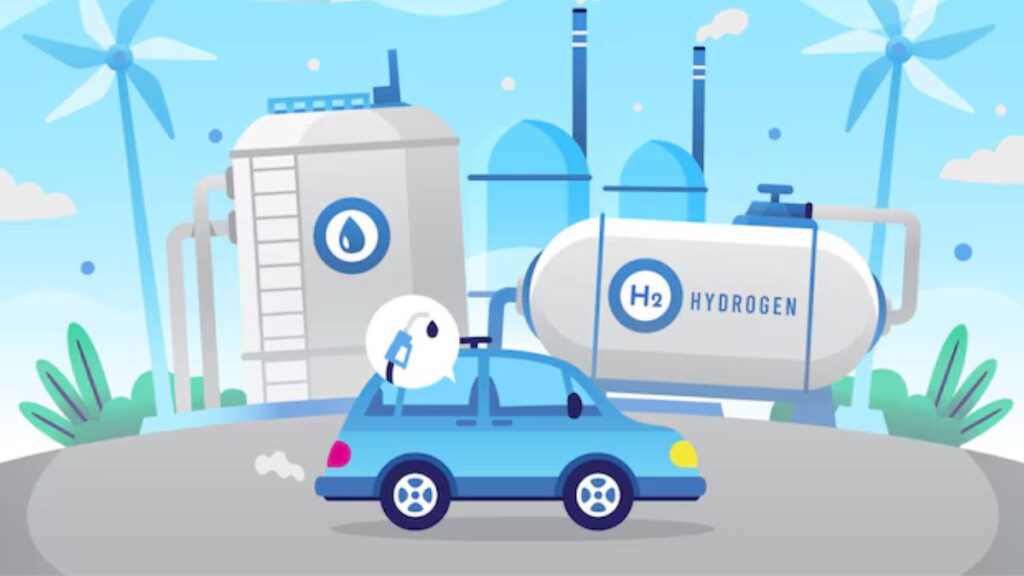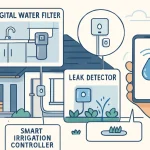Hydrogen, the lightest and most abundant element in the universe, has increasingly found its place as a vital component in various industrial applications, particularly in energy sectors. However, as versatile as it is, hydrogen comes with a hidden danger: its potential to leak. Hydrogen leaks, often undetectable by human senses, can pose significant risks to both equipment and personnel, particularly in environments where it is used or stored under pressure. In this article, we will explore hydrogen leaks, their dangers, and why understanding and monitoring these leaks is essential for safety.
Transformer Hydrogen Monitoring: A Key Component in Leak Detection
Electric transformers, essential in the distribution of electrical power, are often filled with hydrogen gas for cooling purposes. The hydrogen serves as an efficient coolant, helping to regulate the temperature of the transformer and prevent overheating. However, over time, hydrogen leaks can occur due to wear and tear or damaged seals. Since hydrogen is colorless, odorless, and highly flammable, detecting leaks without proper monitoring tools can be incredibly challenging. Regular transformer hydrogen monitoring is necessary to identify any potential leaks, ensuring the safe operation of power systems.
Monitoring transformer hydrogen levels typically involves installing specialized sensors that can detect changes in gas concentrations. These sensors can provide early warning signs of a leak, allowing for prompt maintenance or shutdown of the transformer to prevent catastrophic failures. Regular inspections and timely detection of hydrogen leaks not only safeguard the equipment but also protect personnel working in the area. For critical applications such as this, the use of advanced hydrogen leak detection technology is indispensable.
The Risk Factors of Hydrogen Leaks
The risks associated with hydrogen leaks are multifaceted, ranging from equipment damage to severe safety hazards. Hydrogen is an extremely flammable gas, and even a small leak can lead to potentially dangerous situations, including fires or explosions. The presence of hydrogen in confined spaces can lead to the displacement of oxygen, creating a hazardous environment for workers. Additionally, hydrogen’s flammability is compounded by its low ignition energy, meaning it can easily ignite from sources such as static electricity, hot surfaces, or even sparks.
The Challenges of Detecting Hydrogen Leaks
Detecting hydrogen leaks is no easy feat, primarily due to hydrogen’s unique properties. Unlike many gases, hydrogen is both lighter than air and highly diffusive, making it difficult to detect in its early stages. Traditional leak detection methods, such as using visual inspections or relying on human senses, are not effective for hydrogen, as the gas is odorless and colorless. Additionally, hydrogen tends to escape quickly through small gaps, making it hard to pinpoint its source.
Modern hydrogen leak detection technologies rely on sensors that are specifically designed to detect the presence of hydrogen gas. These sensors can be strategically placed in areas where hydrogen is used or stored, providing real-time data on gas concentrations. By using advanced technologies, it’s possible to monitor hydrogen levels continuously, giving operators the ability to respond quickly if a leak occurs.
The Role of Hydrogen Sensors in Preventing Accidents
Hydrogen sensors are critical tools in preventing accidents and ensuring safety in environments where hydrogen is present. These sensors work by detecting the concentration of hydrogen in the air and providing alerts when levels exceed a safe threshold. Hydrogen sensors can detect even trace amounts of gas, allowing for early detection of leaks before they escalate into dangerous situations. When it comes to monitoring hydrogen in industrial environments, accuracy and reliability are key. Inaccurate sensor readings can lead to false alarms or, worse, a failure to detect a significant leak. Therefore, it is essential to choose hydrogen sensors that are not only sensitive but also resistant to environmental factors such as temperature changes, humidity, and electromagnetic interference. Advanced sensors such as the H2scan hydrogen sensor are designed to address these challenges, offering high sensitivity and precision. With such tools, it is possible to detect leaks before they pose a threat to workers or equipment. In addition to preventing accidents, these sensors can also help businesses comply with safety regulations, which often require continuous monitoring of hydrogen levels.
Best Practices for Preventing and Managing Hydrogen Leaks
Prevention is always the best strategy when it comes to hydrogen leaks. Regular maintenance and inspection of equipment that uses or stores hydrogen are essential for minimizing the risk of leaks. Seals, gaskets, and joints should be checked periodically for wear and damage, as these are common points where leaks occur. Additionally, it is vital to ensure that the storage and transportation systems for hydrogen are well-maintained and meet industry standards.
Training personnel to recognize the signs of a potential hydrogen leak is also crucial. Workers should be educated on the dangers of hydrogen and the importance of reporting any suspicious activities or changes in equipment performance. Establishing emergency protocols and ensuring that personnel are familiar with these procedures can help mitigate the risks associated with hydrogen leaks.
Hydrogen leaks are a serious risk that requires constant vigilance. The use of hydrogen sensors, along with regular inspections and preventative measures, can help mitigate these risks and ensure the safe use of hydrogen in industrial applications. By staying ahead of potential problems and leveraging advanced technology, industries can safeguard their workers, equipment, and the environment from the dangers of hydrogen leaks.







